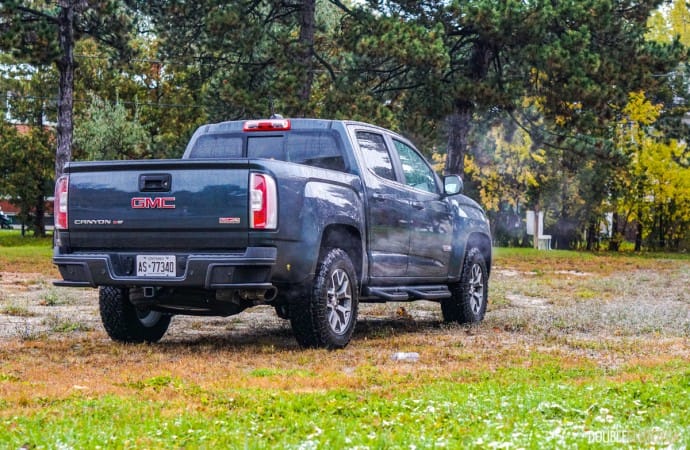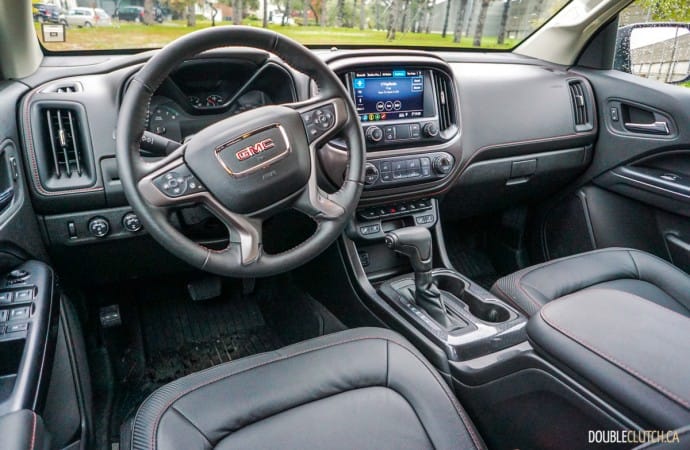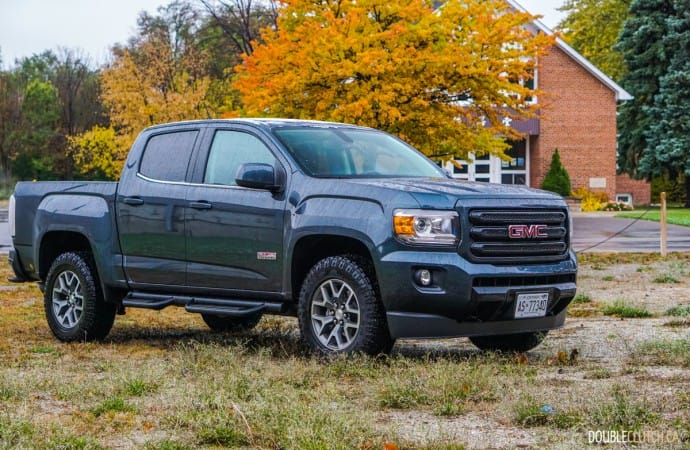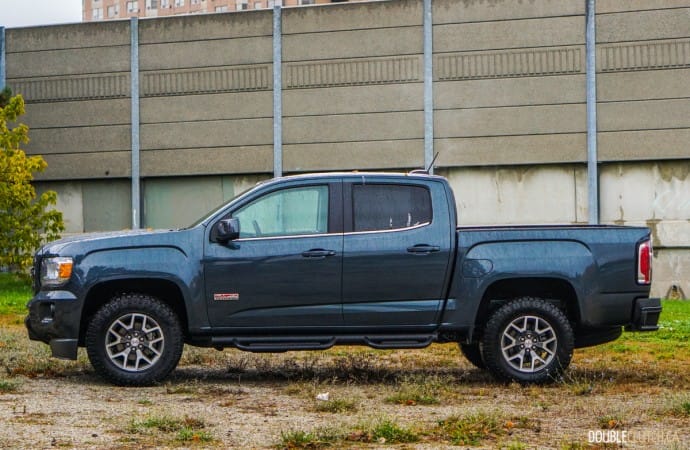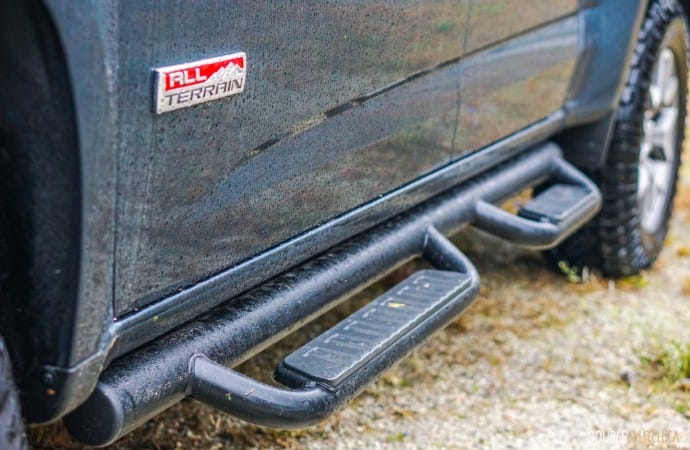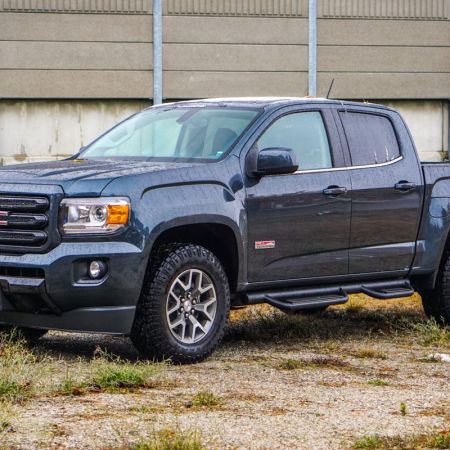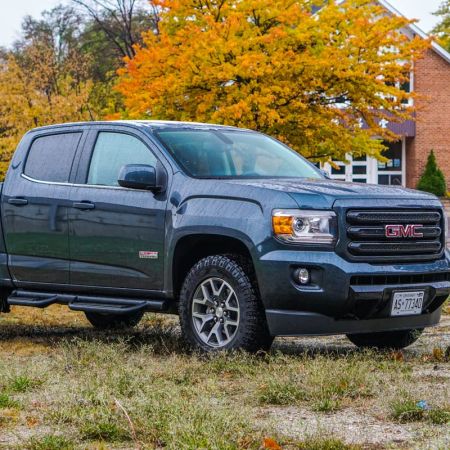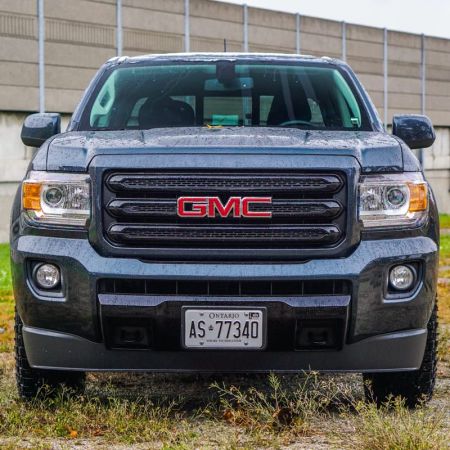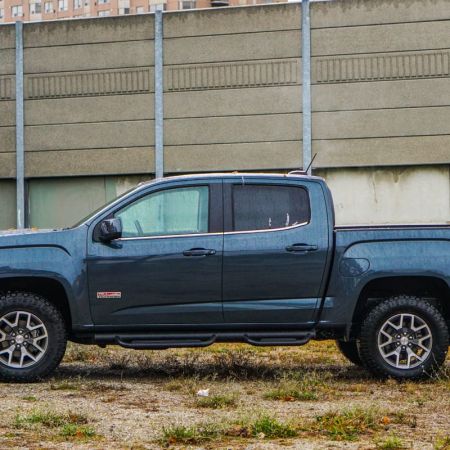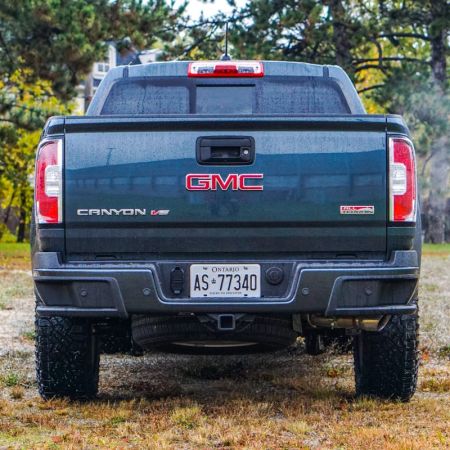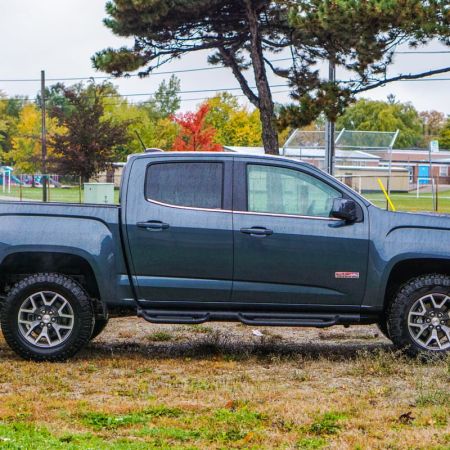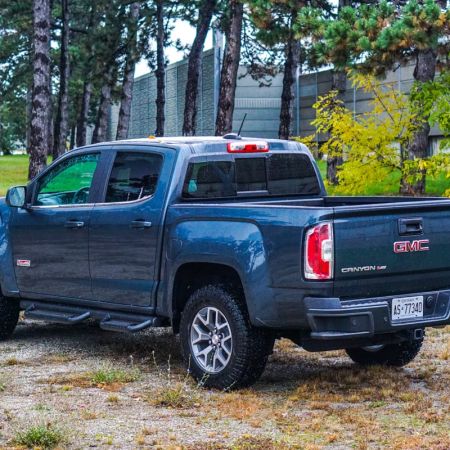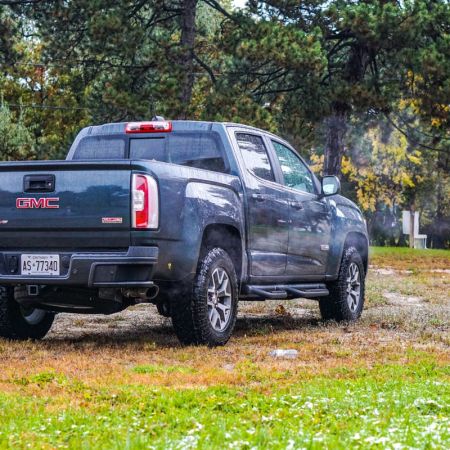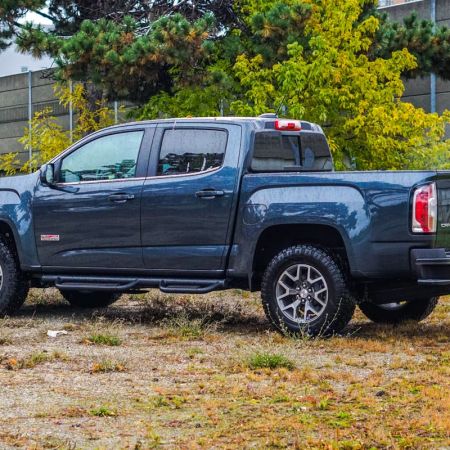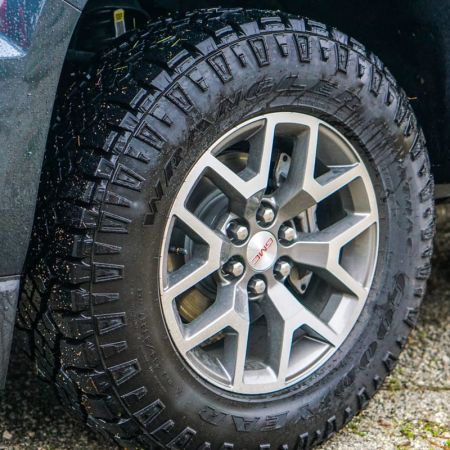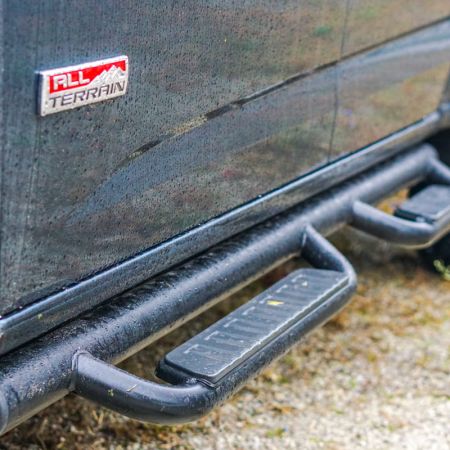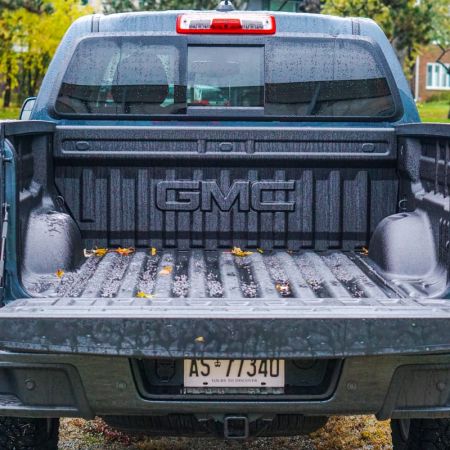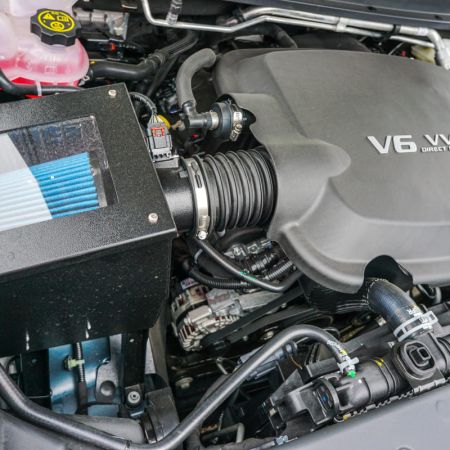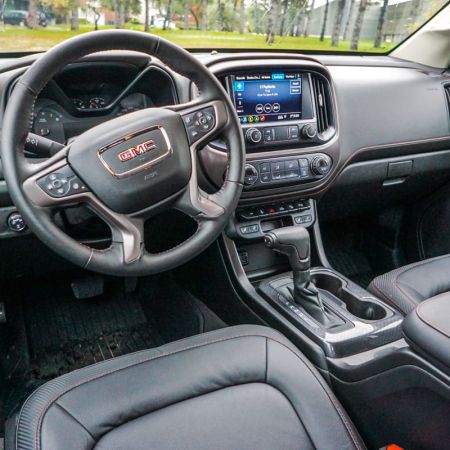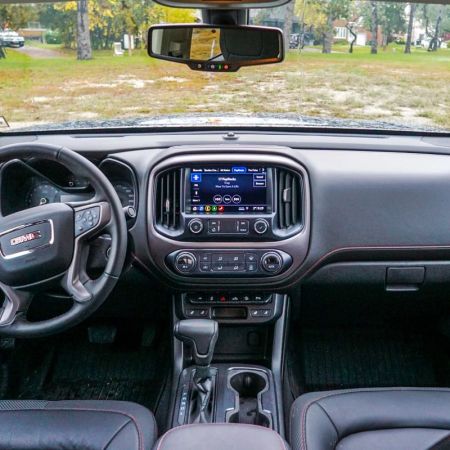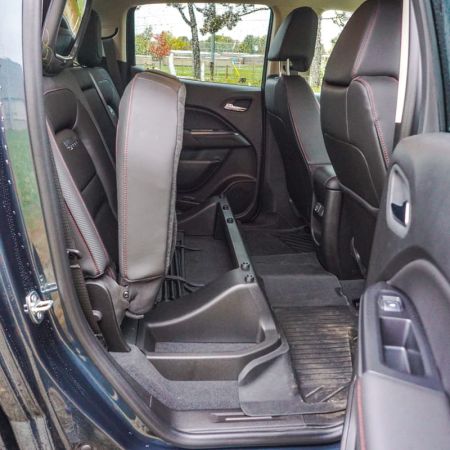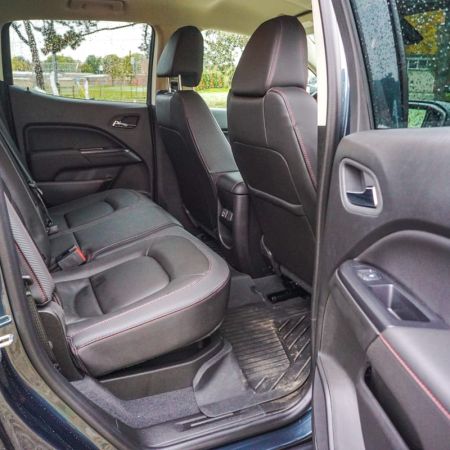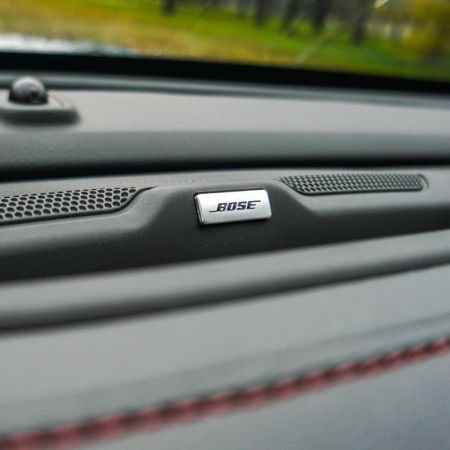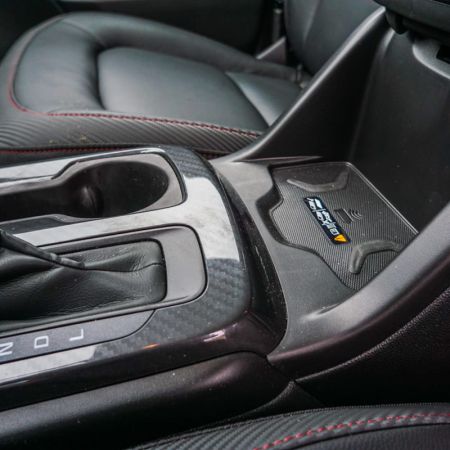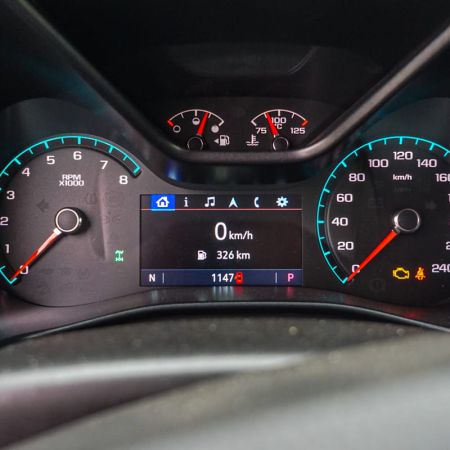With the recent announcements from GM and Ford, the automotive landscape is moving towards just two general shapes: two-box designs (CUV, SUV, wagons) and trucks. The former category has a ton of variety in size, style and price range, while the truck category is mostly made up of full sizers. The small and mid-sized truck segment is heating up, and right in the middle of that battle is the 2019 GMC Canyon All-Terrain; an off-road variant of the small truck launched back in 2015 to great fanfare.
While not as capable off-road as a Jeep Wrangler (reviewed here) or the true off-roading sibling found in the Chevrolet Colorado ZR2 (reviewed here), the All-Terrain is built to get a little bit messier than the other Canyon trim levels. The All-Terrain package consists of unique exterior styling, spray-on bedliner, knobby all-terrain tires, rubber floor liners, three-inch off-road step bars, a skid plate for the transfer case, and off-road tuned suspension.
The interior styling is very utilitarian, in line with the rest of the GMC truck styling, which can make it feel a bit cramped at times since the cab is significantly smaller than its larger GMC Sierra (reviewed here) relative. While the Sierra has a cavernous interior that can comfortably fit five full size adults, the cab size and feel of the Canyon is very much like that of the compact Chevrolet Cruze.
With a base MSRP of $43,300, the All-Terrain X package as outlined above comes at a cost of $2,530. Other options selected on the test vehicle are the optional Navigation ($795), the excellent Bose Premium speaker system ($685), Dark Sky Metallic Paint ($495), HD Trailering package ($295), Engine Block Heater ($150) and a dealer installed Power Package ($2,575) for an as-tested MSRP of $50,825 before taxes and fees.
Let’s focus on that Power Package for a second; it consists of a cold air intake kit and performance exhaust that costs more than the entire All-Terrain package. On the V8-powered full size trucks, the performance exhaust system makes a glorious sound, but the GM 3.6L engine is not something you should ever be considering making louder. Ever. The cold air intake is not a bad addition, but it looks like something they asked the interns to design (I would know, I used to be one) and not something that went through the typical research and development an OEM part would undergo.
As with most pickup trucks, the Canyon is available with multiple cab and bed size combinations. Cab options are Extended Cab (really just front seats with some additional storage room) and the four-door Crew Cab tested here. The truck bed comes in five and six-foot lengths, with the former being the better choice for Crew Cab trucks to keep vehicle length parking lot friendly.
Base mode work truck versions of the Canyon come with a 2.5L inline four-cylinder engine as standard equipment, but once the 4×4 system or a long box is equipped on the Crew Cab, a 3.6L V6 becomes the norm. Noteworthy is a turbocharged 2.8L four-cylinder Duramax Diesel available as an up-charge on Crew Cab models. This Canyon was equipped with the smooth revving 3.6L V6, which is rated for 308 horsepower at 6,800RPM and 275 lb-ft. of torque at 4,000RPM.
With a manual transmission only available on the most basic models, automatic transmissions are the norm here as with most other vehicles on the market these days. Diesel trucks get a six-speed auto, while the V6 here is mated to a wonderful eight-speed gearbox that keeps the engine revs down under mild acceleration and is very nice to drive; a welcome improvement over the six-speed of previous model years.
Drinking 87-octane regular unleaded fuel, the V6 equipped 4×4 Crew Cab, short box Canyon is rated for 14.1L/100km city, 10L/100km highway and a combined rating of 12.2L/100km. Definitely not bad for a truck that can haul a five or six-foot bed worth of junk and tow up to 3175 kg (7,000 pounds) behind it.
As a pickup truck, the Canyon drives very nicely, with the knobby off-road tires giving it a bit more of a youthful vibe, and the cabin is sound insulated against road noise (except for the awful exhaust system reminding you there is no V8 LS-family engine under that hood). Acceleration is swift thanks to the V6, and ride comfort is decent for a body-on-frame vehicle, especially one geared for driving through some mud. There’s no question that the powertrain is up for the job no matter what it is you’re doing.
The ever-popular truck segment has plenty of competition for the Canyon. From the home turf, shoppers obviously could look at the Colorado for different styling preferences, or if size isn’t that big of a deal, there are plenty of configurations of the all new Sierra and Silverado (reviewed here) that are in a similar price range to a fully loaded Canyon. In the small to mid-sized category, Ford has recently re-launched the Ranger to great fanfare, and the Toyota Tacoma is a great contender as well.
If you don’t want a full size truck but need to tow and rear seat room isn’t a concern, the 2019 GMC Canyon All-Terrain is a fantastic work mule. As a daily driver that is occasionally used as a truck, however, there are better options out there. The Canyon just doesn’t have some of the common options drivers are coming to expect, such as full keyless entry, a heads-up display, or memory seats. If these are compromises you’re willing to make, this might be the truck for you.

